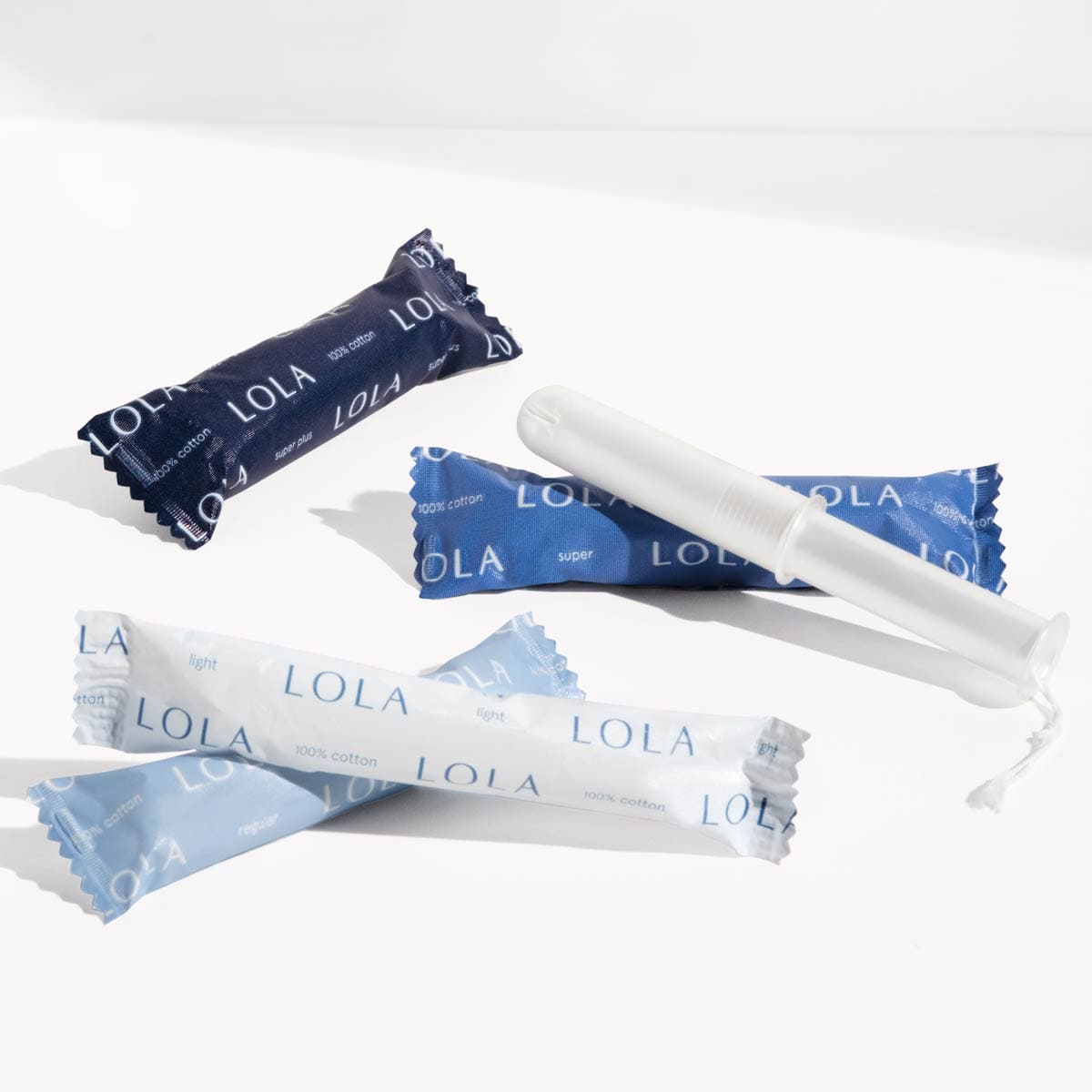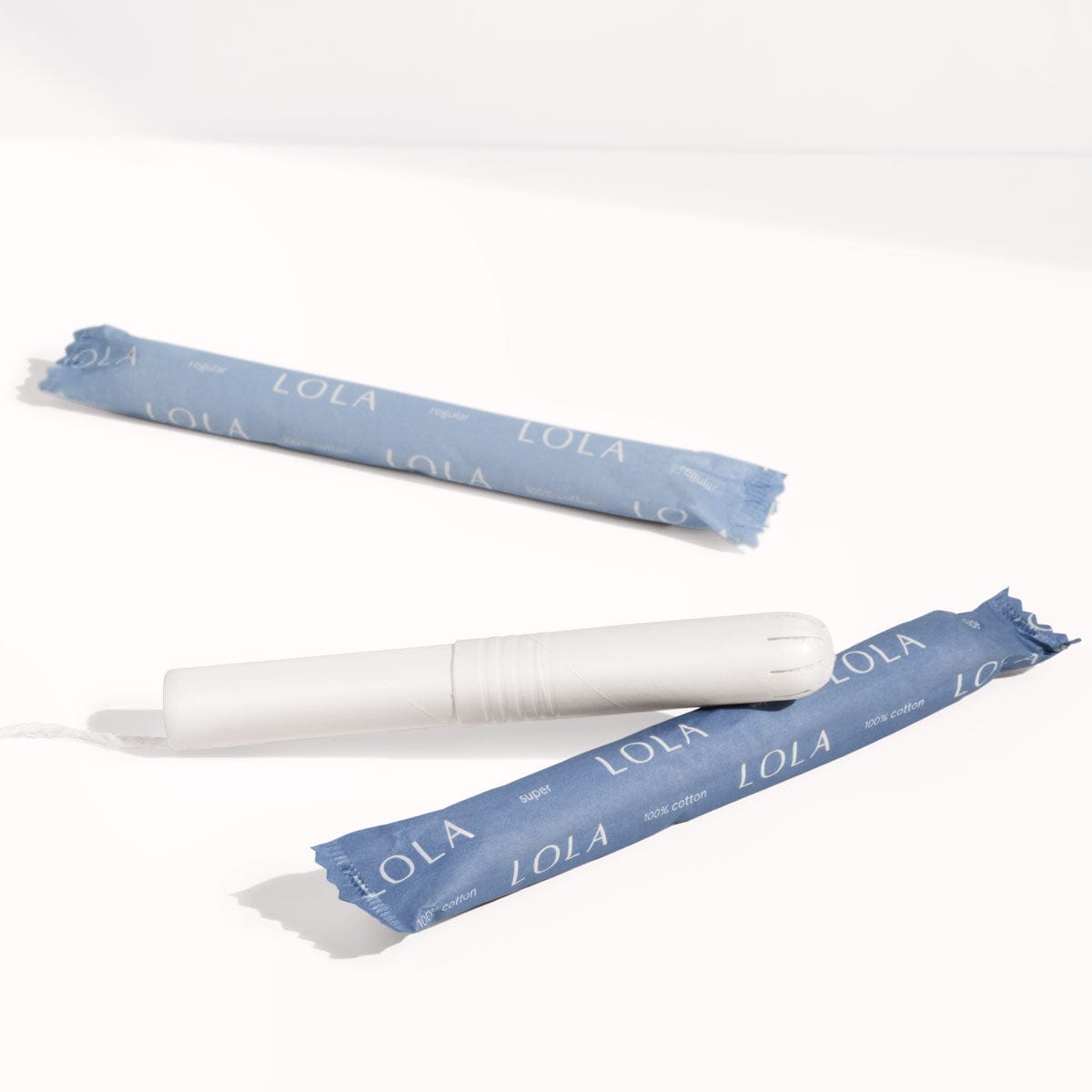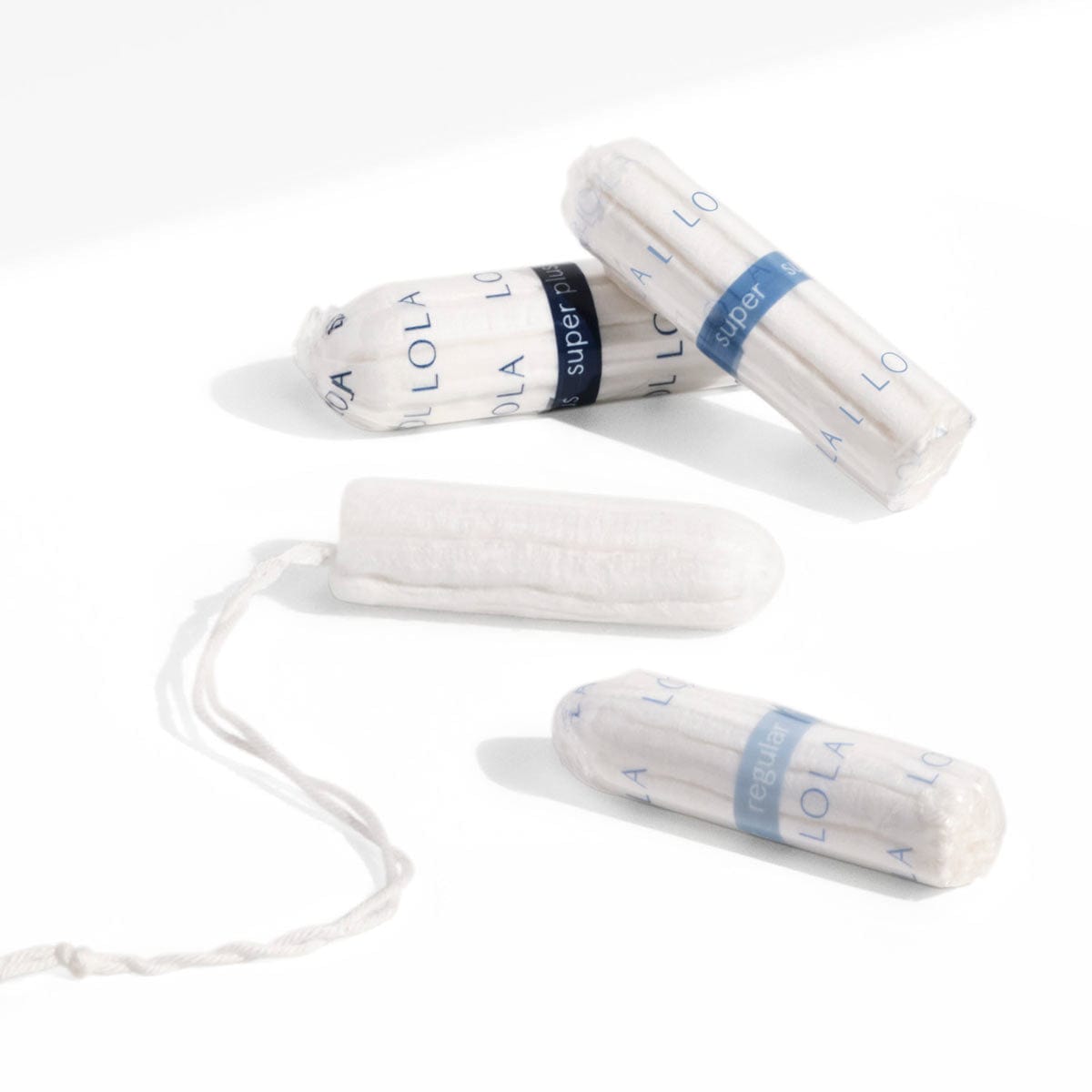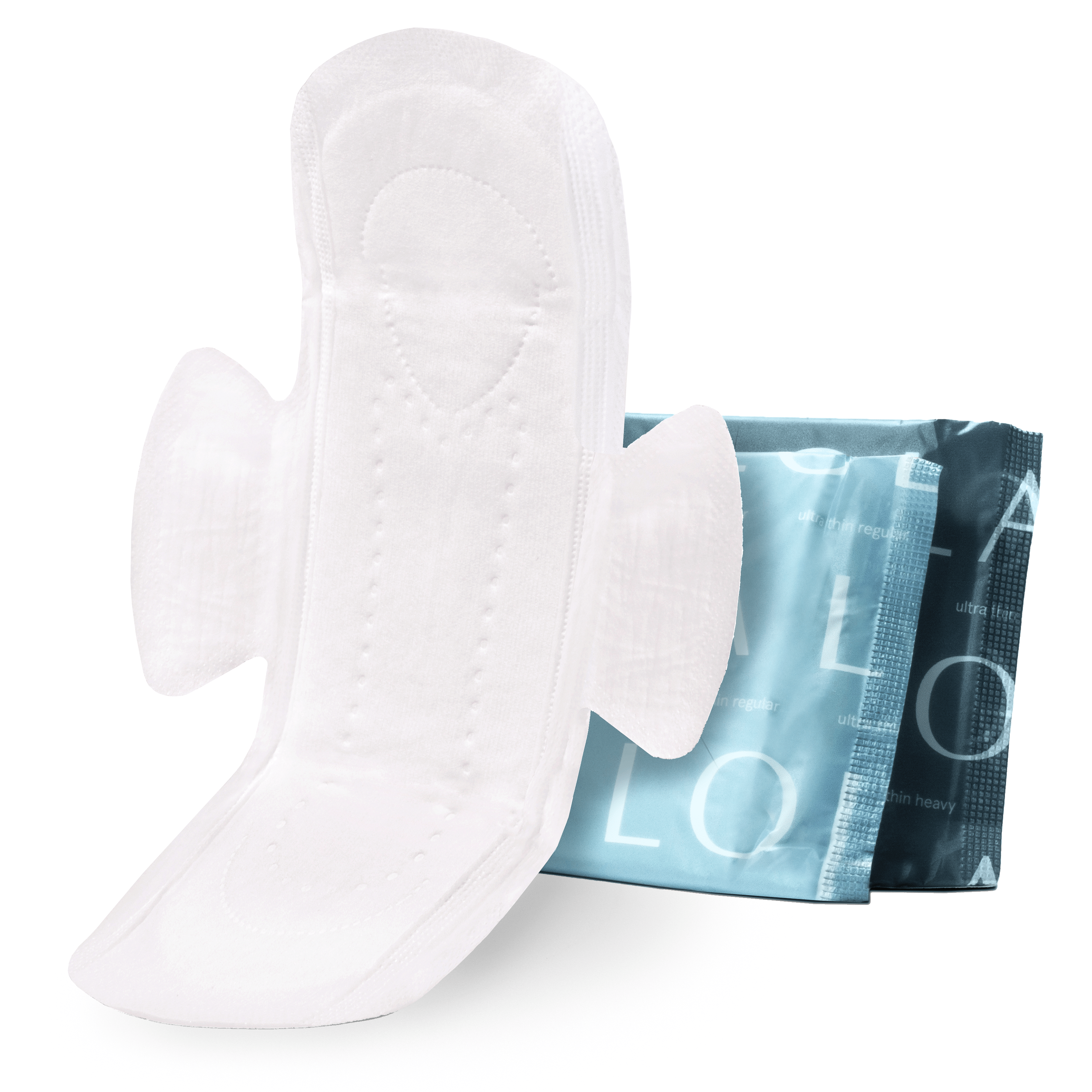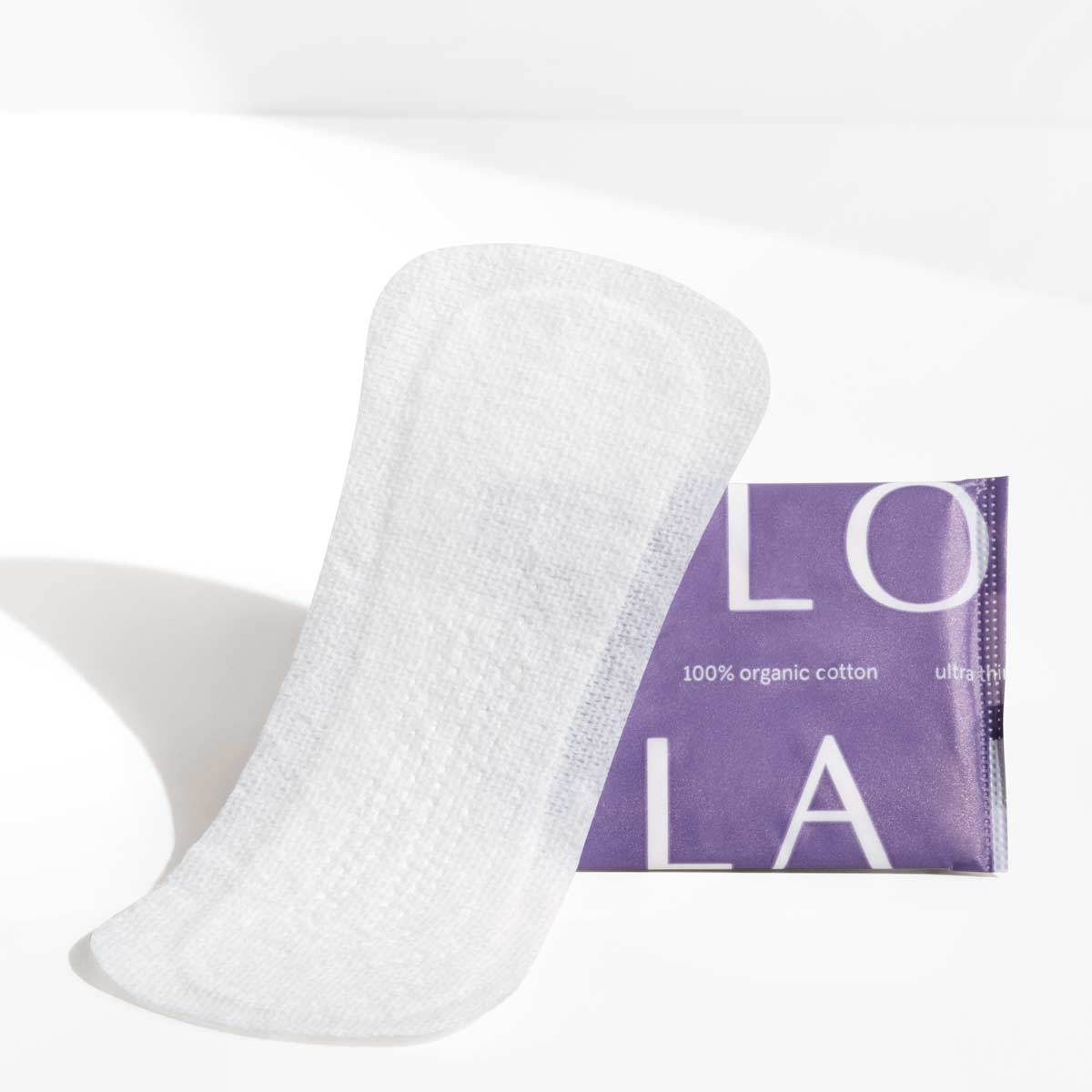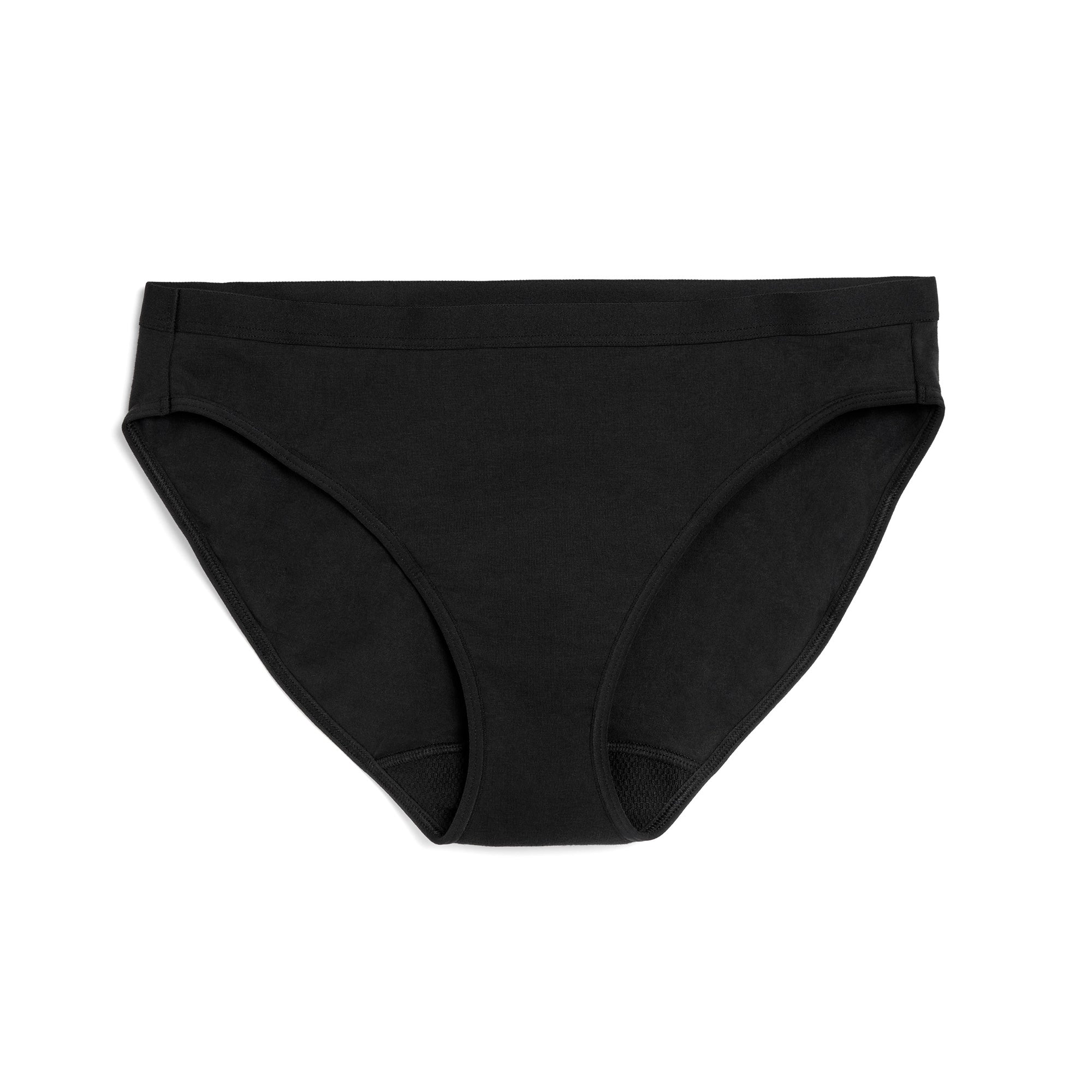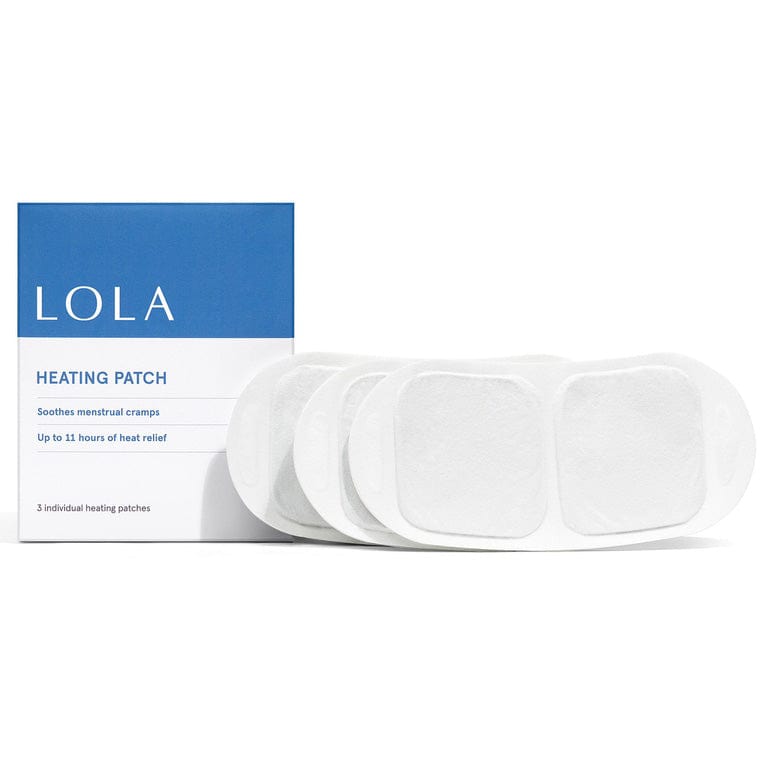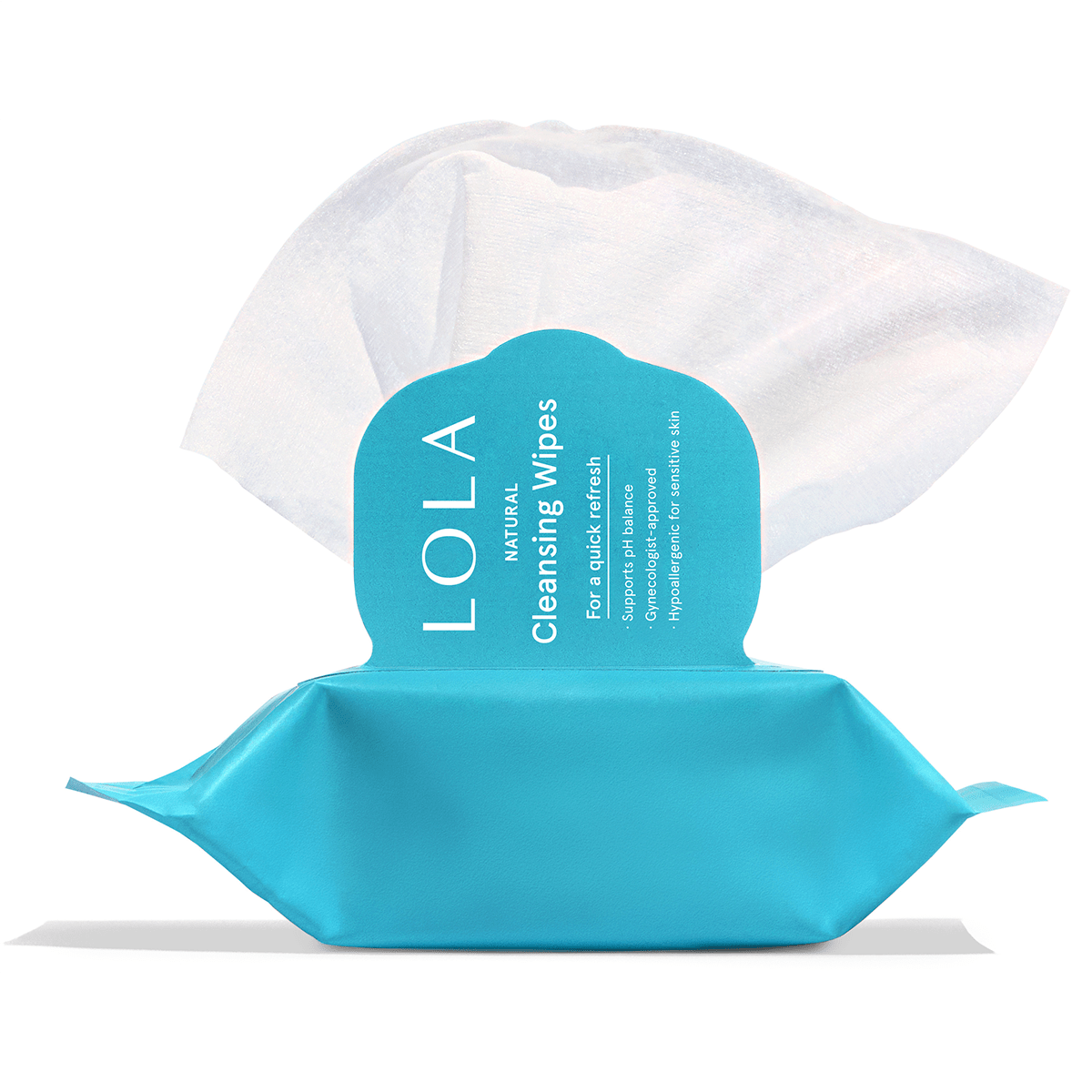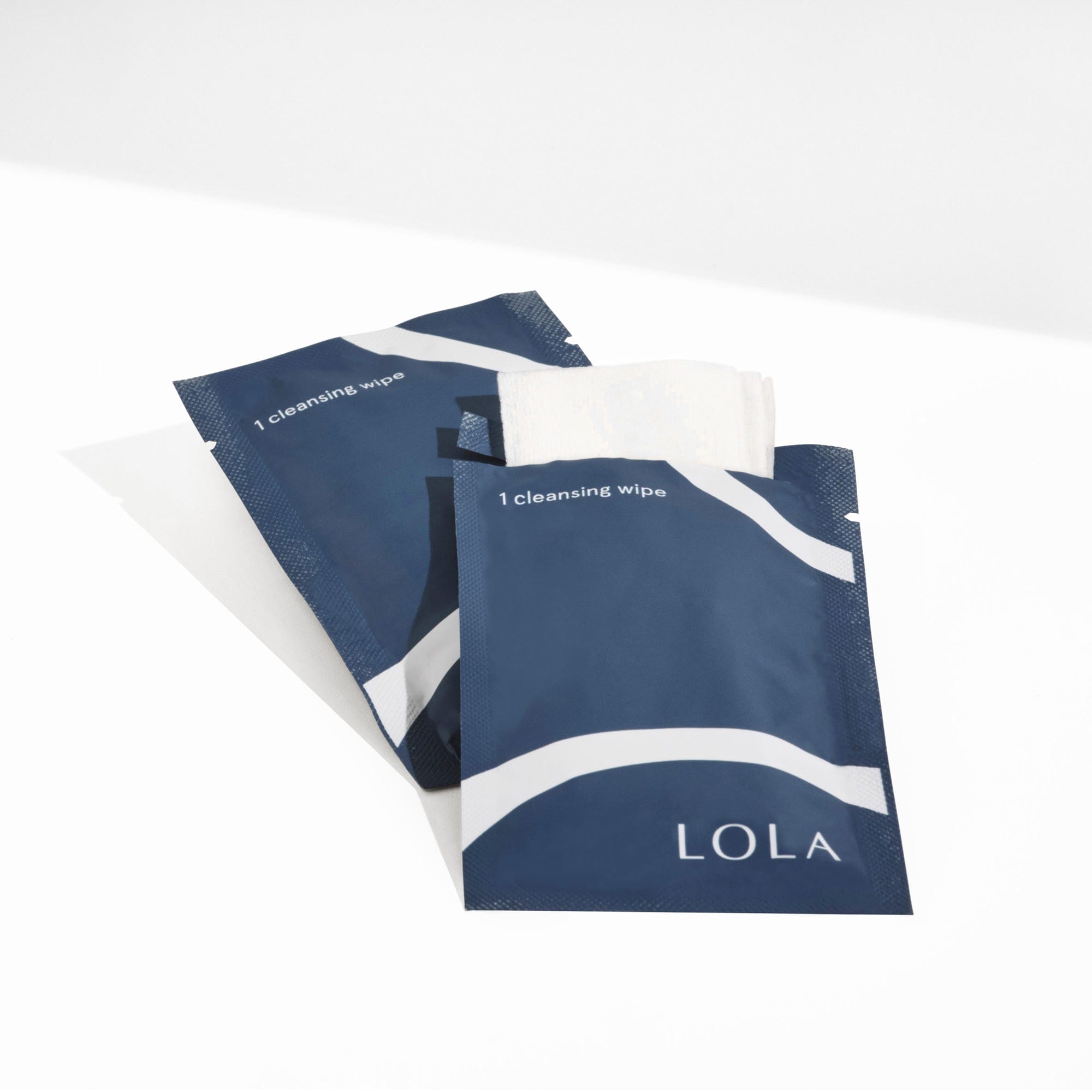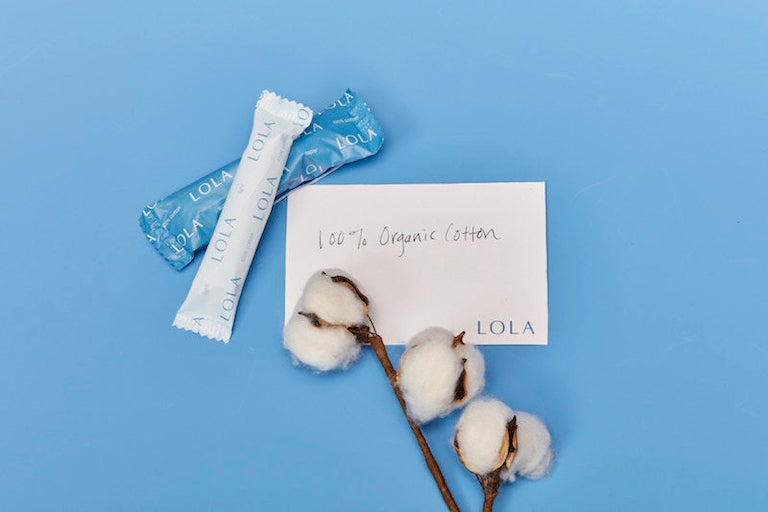It's hard to get excited about cotton underwear: they're not particularly sexy, seem to stain easily, and can lose their shape and become baggy pretty quickly.
But gynecologists swear by them for vaginal hygiene. "Any time women are having problems with vaginal infections, we tend to recommend cotton underwear as sort of the least triggering fabric," says Dr. Kelly Culwell, an OBGYN and former medical officer at the World Health Organization. "It's one of our many steps to vaginal and vulvar hygiene."
But this begs an important question: what role does underwear fabric even play in vaginal health? Let’s find out!
Why underwear fabric matters for vaginal health
The vagina is one of the most delicate parts of our bodies, and we subject it to underwear all day, every day. So, it makes sense that we should choose underwear fabrics carefully to make sure that sensitive nether regions aren’t being exposed to potential irritants and chemicals that can throw the vaginal flora off.
Here are some of the panty fabric properties you need to look out for to keep your vagina healthy:
- Breathability: Your underwear fabric needs to allow enough air to circulate around your vagina. Otherwise, moisture will build up down there, which is prime breeding grounds for bacteria and fungi. Non-breathable underwear results in a higher possibility of UTIs, yeast infections, and bacterial vaginosis (BV).
- Moisture control: Vaginal sweat is a thing that happens. And yes, it’s normal. What’s not normal is wearing underwear that traps this heat and moisture instead of absorbing it. Not only will this make your delicate region more susceptible to infections, it will also increase your discomfort throughout the day.
- Hypoallergenic: Wearing synthetic underwear that has been treated with toxic chemical substances and dyes can irritate your vagina, which can lead to itching and even allergies. Additionally, the toxic chemicals from the vulvar regions rubbing against the underwear all day could also throw your vaginal pH off. Now, why is this important? Because, an unbalanced vaginal pH can lead to an overgrowth of bacteria and cause infections and allergic reactions.
According to Shira Wheeler, the founder of Oddo Body underwear that manufactures 100 percent cotton underwear, you should avoid any fabric that has synthetic, silk, or elastic (not including the leg- and waistbands) content. These materials can prevent air and moisture flow between your vagina and the atmosphere, and that can increase your risk of yeast infections. Wheeler explains:
The vagina is a self-cleaning organ, but in order for it to maintain a balanced biome, it needs to breathe. If you're covering your vulva with materials that trap or absorb moisture, you're basically creating a petri dish for bacteria to live.
So, is cotton underwear good for you? It’s the best!
How cotton underwear helps prevent vaginal issues
Cotton underwear checks all the boxes for the best type of panty fabric. It’s breathable, absorbs moisture, and is more comfortable than lacy lingerie or other synthetic fabrics. Moreover, organic cotton underwear is free from harmful chemicals that can negatively affect your delicate vagina.
So, it’s no surprise that experts recommend cotton underwear for best vaginal health over fabrics like modal, polyester, or other synthetic blends. Here are a few of the vaginal issues a pair of 100 percent cotton undies can help prevent:
Yeast infections
The National Institutes of Health report that 75 percent of adult women have suffered from a yeast infection at some point in their lives. Symptoms include vaginal itching or soreness, abnormal discharge, pain during sex, and discomfort urinating. Yeast infections are caused by the overgrowth of the Candida fungus, which can be exacerbated by moisture-trapping synthetic underwear. For this reason, the CDC recommends wearing cotton underwear to help reduce the risk.
Urinary tract infections
Urinary tract infections, or UTIs, are also common in women. The National Kidney Foundation estimates that 1 in 5 women have experienced a UTI at some point in her life. UTIs are caused by bacterial infections that are typically in the urethra or bladder, but they can also occur in the uterus and kidneys as well. The American College of Obstetricians and Gynecologists (ACOG) recommends wearing cotton underwear to help reduce moisture and the potential growth of bacteria.
Bacterial vaginosis
According to the CDC, bacterial vaginosis is one of the most common types of vaginal infections. Although the causes are not entirely known, researchers know that BV is most common in sexually active women. To prevent BV, they suggest not having sex, reducing the number of sexual partners, and avoiding douching. Doctors also recommend that women who are experiencing BV wear cotton underwear, since the breathability of the fabric can help reduce the spread of bacteria.
Vulvodynia
Vulvodynia is a painful condition that affects the vulva, and symptoms may include stinging, burning, irritation, and rawness. Vulvodynia is caused by inflammation of the vulva, damage or irritation to the vaginal nerves, genetic disorders, sensitivity to foods, and dysfunction of the pelvic floor muscles. The ACOG also recommends that women with vulvodynia wear cotton underwear to help reduce any additional irritation to the vagina.
Cotton underwear vs. other materials
We’ve established that cotton is the best underwear fabric for vaginal health. But how does it compare to other types of underwear fabrics?
Cotton vs. nylon
Nylon is a synthetic fabric, which makes it moisture-wicking. While it doesn’t absorb sweat, it also doesn’t allow for ventilation around your nether regions. This means it’s not a good underwear option for daily use. With nylon underwear, you also run the risk of exposing your delicate area to harmful chemicals.
Having said that, there is a time and place for nylon underwear. If you’re working out or doing physical activity where you expect to sweat a lot, nylon underwear, with all its moisture-wicking properties, might be a better choice than cotton. This is because cotton underwear will absorb all your sweat, leaving you feeling soppy and uncomfortable, while nylon underwear will keep your nether regions drier.
Cotton vs. silk
Like cotton, silk has a soft feel, has hypoallergenic properties, and is breathable (although not as much as cotton). While it doesn’t absorb moisture as well as cotton underwear, it’s more aesthetically pleasing and can be a good option for when you want to feel sexy. Once in a while, silk is a good option—just don’t go replacing all of your cotton underwear with silk ones.
Cotton vs. polyester
Polyester, like nylon, is an entirely synthetic material, which means it wicks away moisture instead of absorbing it and doesn’t allow for any air circulation. Similar to nylon, it’s definitely recommended to wear polyester underwear for daily use but you can wear it when you’re engaging in physical activity where you’ll sweat a lot (such as when hiking, running, or working out).
Cotton underwear vs going commando
Not wearing any panties at all actually has a lot of benefits (besides being freeing). When you go commando, your vaginal area has room for airflow which prevents moisture and heat from getting trapped. This means better evaporation, which leads to less odor and bacteria buildup. There’s also no chafing or irritation that comes with underwear constantly brushing up against your sensitive parts.
Bottom line? It’s a personal preference. But make sure that you don’t wear tight clothes when going underwear-free. And if you just don’t like the feel of going commando, you can try ditching your underwear at nights when you sleep. And no underwear is better than wearing underwear made from synthetic materials.
How different underwear styles impact vaginal health
It’s not just the underwear fabric that impacts vaginal health. Underwear styles play a role in it, too.
Bikini cut
Bikine panties sit low on your hips with a decent (but not full) coverage in the front and back. They are slimmer on the sides, so they accentuate your figure. This underwear style isn’t very restrictive and allows for breathability, so it’s a good choice for when you want a mix of comfort and style.
Briefs
Briefs are the classic panty style, with a comfortable and wide waistband that sits above your hips, and lower leg cut openings. They offer a lot of coverage and are super comfortable to wear. There’s also enough airflow and no chafing, making them a great choice for everyday use. They are the most practical for everyday use and the best for your vaginal health.
Cheeky
Cheeky panties offer more back coverage than thongs, but still les than bikini styles. While cheeky underwear is more form-fitting than, briefs, it still gives you enough breathability and movement. That being said, these can cause more friction than other types of underwear, so save these for when you’re feeling a little naughty.
Hipster
Hipster panties are hip hugger panties, meaning they sit perfectly on your hips. They come in three different styles: high-waist, mid-waist, and low-waist. They offer full coverage, which means they won’t negatively affect your vaginal health. In a cotton fabric, these undies get a thumbs-up from us!
Are thongs bad?
From bodycon dresses to skinny jeans, the need to eliminate panty lines is ever present hence the lasting popularity of the thong (not to mention, Sisqo's 1999 hit song). But frequent thong wearers should beware.
"Some thongs and all g-strings are unhealthy because there is greater likelihood that they will move back and forth throughout the day," says Wheeler. "Again, the vagina is a sensitive biome and a G-string can transfer bacteria from the anus to the vagina as fabric shifts with wear."
To answer the question: thongs aren't necessarily bad, but they may carry more risk of infection with them.
Best practices for underwear hygiene
Change underwear frequently
The rule of thumb is to change your panties at least once a day. If you start feeling uncomfortable due to discharge buildup, it’s totally okay to wear more than one pair of underwear a day. Bottom line is that your underwear should feel dry and comfortable, which means you should never sit around in damp panties.
Wash in hot water
"I've heard from many people that their grandmothers (mine included) used to iron their underwear," Wheeler says. "We have better washing machines these days, but you should always machine wash your underwear [with] hot [water]." (Water needs to be 140-150 degrees to kill germs).
She recommends hand-washing Oddo Body's briefs, which are made from fine Japanese cotton, in warm water.
"It's important, when washing by hand, to use a delicate soap, avoid perfumes, and to pay special attention when cleaning the fabric that touches your vulva and anus," she says. "Once you've washed with soap, make sure that you've thoroughly rinsed the fabric of any soap."
Use the right detergent
The piece of fabric that’s always up close and personal to your most delicate region needs special care–even more so if you have sensitive skin and are prone to allergic reactions. Use hypoallergenic detergent to wash your underwear. This prevents any residual chemicals from harsh detergents from irritating your vulvar area the next time you wear the same pair of underwear. While we’re on it, avoid anything that contains artificial fragrances, too. Once you’re done washing, don’t put your underwear in the dryer. Instead, hang it out to air dry.
Store your underwear correctly
Instead of stacking your panties on top of one another, fold or roll them and place them neatly in storage containers. This prevents your underwear from wrinkling or losing their shape. This means they’ll last longer, fit you perfectly instead of becoming loose, and be easy to find!
So there you have it. While lacy thongs might look cute, 100% cotton granny panties (with their soft feel) are going to be there for you, healthwise. And thanks to creative people like Wheeler, we're starting to see more cotton panties on the market that are both good for your health AND easy on the eyes. Hopefully, next time you pick out your underwear, you'll think about your vagina not just your outfit.
